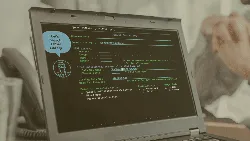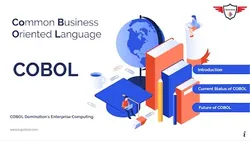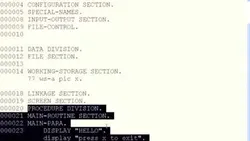
TSO&ISPF Getting Started 
This course provides an introduction to the ISPF File/Program Editor running in a TSO Session, enabling users to find and edit programs in a typical Mainframe environment. Participants will learn how to navigate the system and apply their edits. ▼
ADVERTISEMENT
Course Feature
![]() Cost:
Cost:
Free Trial
![]() Provider:
Provider:
Pluralsight
![]() Certificate:
Certificate:
Paid Certification
![]() Language:
Language:
English
![]() Start Date:
Start Date:
On-Demand
Course Overview
❗The content presented here is sourced directly from Pluralsight platform. For comprehensive course details, including enrollment information, simply click on the 'Go to class' link on our website.
Updated in [February 21st, 2023]
What does this course tell?
(Please note that the following overview content is from the original platform)
This course will teach you how to use the ISPF File/Program Editor running in a TSO Session to find what program(s) you need to fix and how to apply your edits in a typical Mainframe "Shop".
For some, the IBM mainframe world of legacy programs may be a bit intimidating. It is not the finite ecosystem of programming in a java or .Net environment. But (due to a scarcity of resources) you may find yourself being asked to code a quick fix for a COBOL program and - being able to do so - may well be the differentiator that makes you the "go to gal or guy" in an IBM ‘shop"! in this course, TSO/ISPF Getting Started, you’ll learn what to do when you are given a specification. First, you’ll explore the ISPF utilities - where you will be able to search for the programs that you'll need to analyze and copy to your own project libraries for the fix. Next, you’ll discover how to set up PF keys so you can hot key from panel to panel, under different menus and organize your workflow by creating test and staging (PDS) libraries. Finally, you’ll learn how to use ISPF command lines and line commands to edit your fixes and limit your edits to just the few lines of COBOL. When you’re finished with this course, you’ll have the skills and knowledge needed to fix COBOL programs and stage the results in a manner that seasoned COBOL programmers would consider as consistent with their own standards and, perhaps, you will realize why those same programmers prefer using the ISPF editor as the easiest and fastest way to get the job done.What can you get from this course?
We consider the value of this course from multiple aspects, and finally summarize it for you from three aspects: personal skills, career development, and further study:
(Kindly be aware that our content is optimized by AI tools while also undergoing moderation carefully from our editorial staff.)
What skills and knowledge will you acquire during this course?
Upon completion of the TSO&ISPF Getting Started course, participants will acquire the skills and knowledge needed to use the ISPF File/Program Editor running in a TSO Session to find the programs they need to fix and apply their edits in a typical Mainframe "Shop". They will gain a better understanding of the IBM mainframe world of legacy programs, and how to navigate it. They will learn how to use the ISPF utilities to search for programs, set up PF keys, create test and staging (PDS) libraries, and use ISPF command lines and line commands to edit COBOL programs. Additionally, they will gain the confidence to be the "go to gal or guy" in an IBM 'shop" and understand why seasoned COBOL programmers prefer using the ISPF editor as the easiest and fastest way to get the job done.
How does this course contribute to professional growth?
The TSO&ISPF Getting Started course contributes to professional growth by providing participants with the skills and knowledge needed to work in the IBM mainframe environment. Participants will gain the ability to use the ISPF File/Program Editor to search for programs, set up PF keys, create test and staging libraries, and use ISPF command lines and line commands to edit COBOL programs. They will also gain a better understanding of the IBM mainframe world of legacy programs, and how to navigate it. With these skills, participants will be able to quickly and efficiently fix COBOL programs and stage the results in a manner that meets the standards of experienced COBOL programmers. This course also provides participants with the opportunity to pursue career paths such as Mainframe Programmer, Mainframe Systems Analyst, Mainframe Database Administrator, and Mainframe Security Administrator. Additionally, participants can pursue education paths such as a Bachelor of Science in Computer Science or Information Systems, or a Master of Science in Computer Science or Information Systems.
Is this course suitable for preparing further education?
The TSO&ISPF Getting Started course provides participants with the skills and knowledge needed to apply their knowledge to the IBM mainframe environment. Participants will gain the ability to use the ISPF File/Program Editor to search for programs, set up PF keys, create test and staging libraries, and use ISPF command lines and line commands to edit COBOL programs. With these skills, participants will be able to quickly and efficiently fix COBOL programs and stage the results in a manner that meets the standards of experienced COBOL programmers. This course is suitable for preparing further education in the fields of computer science, information systems, and related disciplines.
Course Provider

Provider Pluralsight's Stats at AZClass
Pluralsight ranked 16th on the Best Medium Workplaces List.
Pluralsight ranked 20th on the Forbes Cloud 100 list of the top 100 private cloud companies in the world.
Pluralsight Ranked on the Best Workplaces for Women List for the second consecutive year.
AZ Class hope that this free trial Pluralsight course can help your COBOL skills no matter in career or in further education. Even if you are only slightly interested, you can take TSO&ISPF Getting Started course with confidence!
Discussion and Reviews
0.0 (Based on 0 reviews)
Explore Similar Online Courses

Become an EDM Producer

Getting to Know QuickBooks Online

Python for Informatics: Exploring Information

Social Network Analysis

Introduction to Systematic Review and Meta-Analysis

The Analytics Edge

DCO042 - Python For Informatics

Causal Diagrams: Draw Your Assumptions Before Your Conclusions

Whole genome sequencing of bacterial genomes - tools and applications

Mainframe COBOL Tutorial

COBOL

Mainframe COBOL
 Related Categories
Related Categories
 Popular Searches
Popular Searches
Quiz
 Submitted Sucessfully
Submitted Sucessfully
1. What is the purpose of this course?
2. What will you learn in this course?
3. What is the benefit of using the ISPF editor?
4. What is the main focus of this course?
5. What is the acronym for the IBM mainframe world of legacy programs?
Correct Answer: TSO


Start your review of TSO&ISPF Getting Started